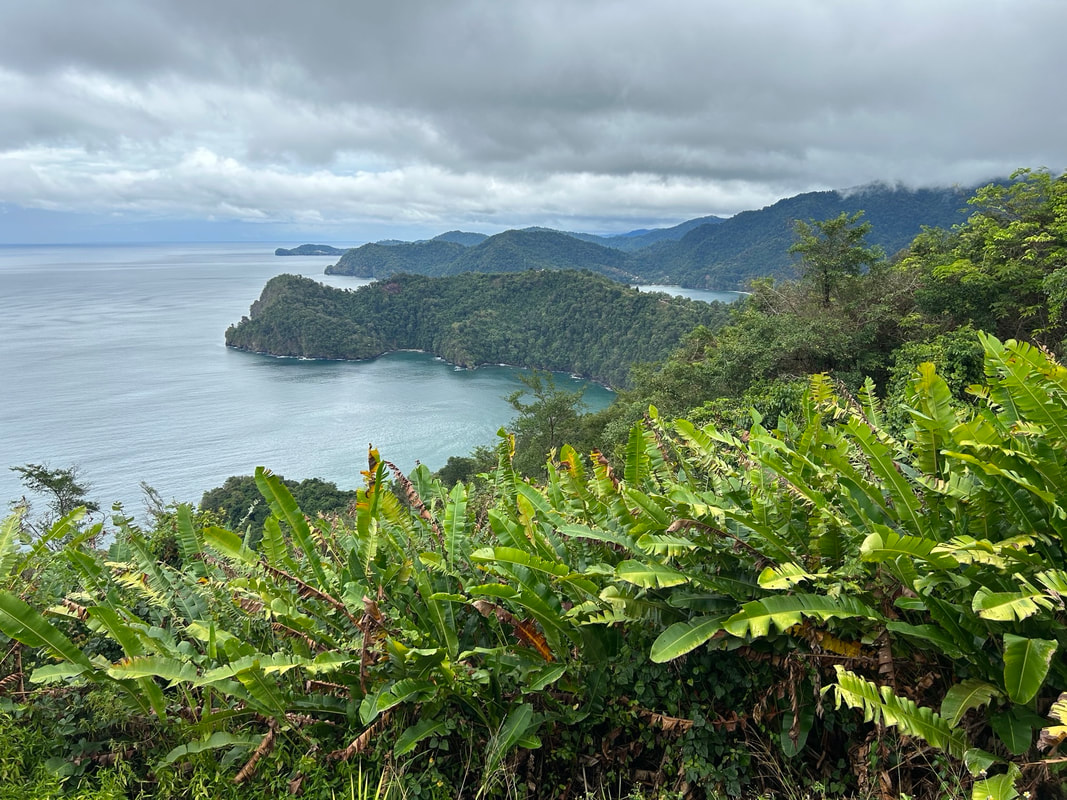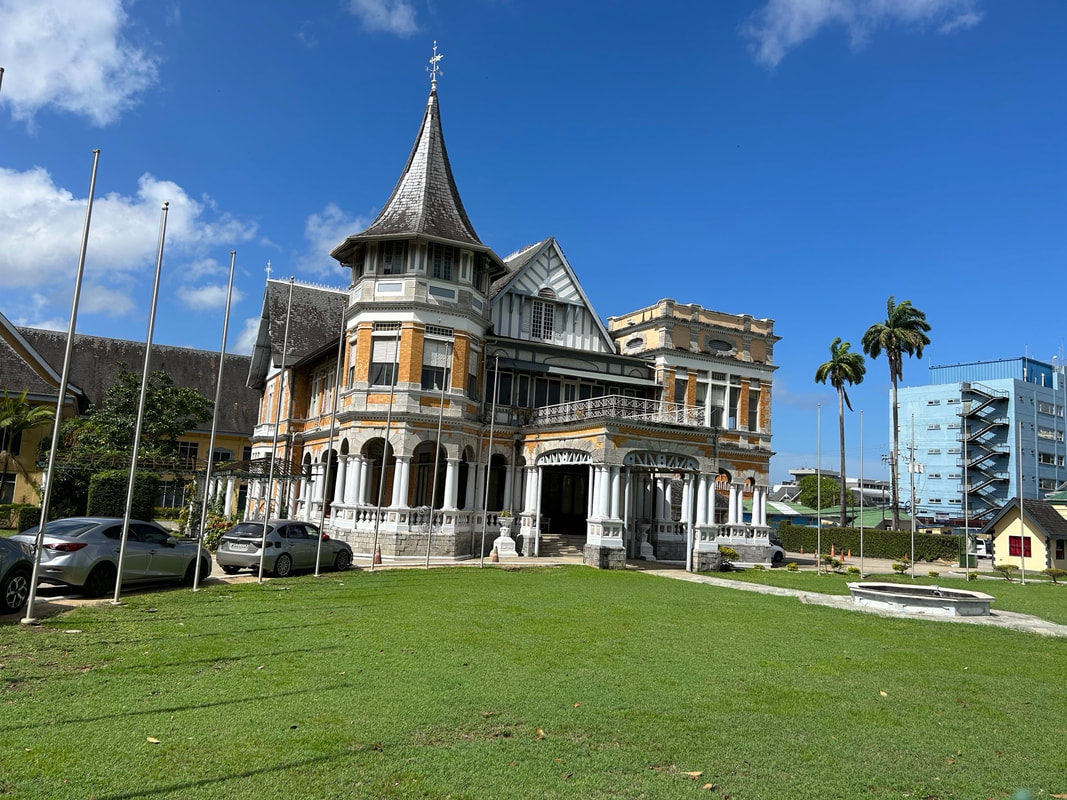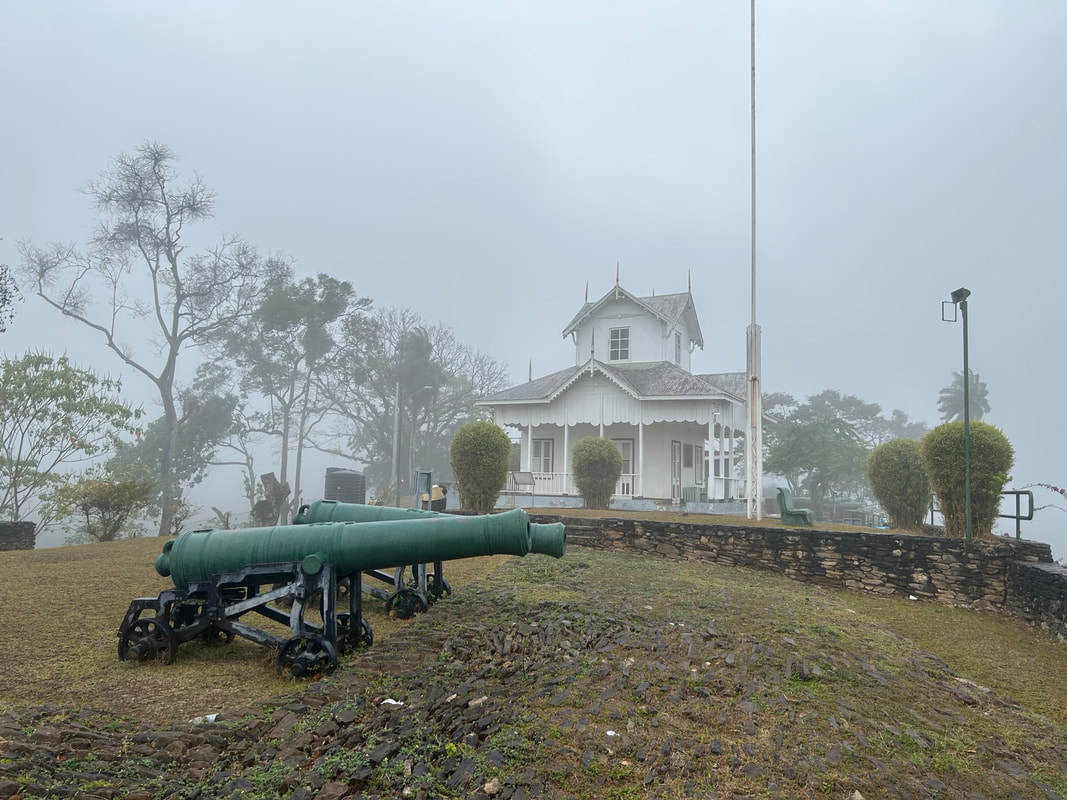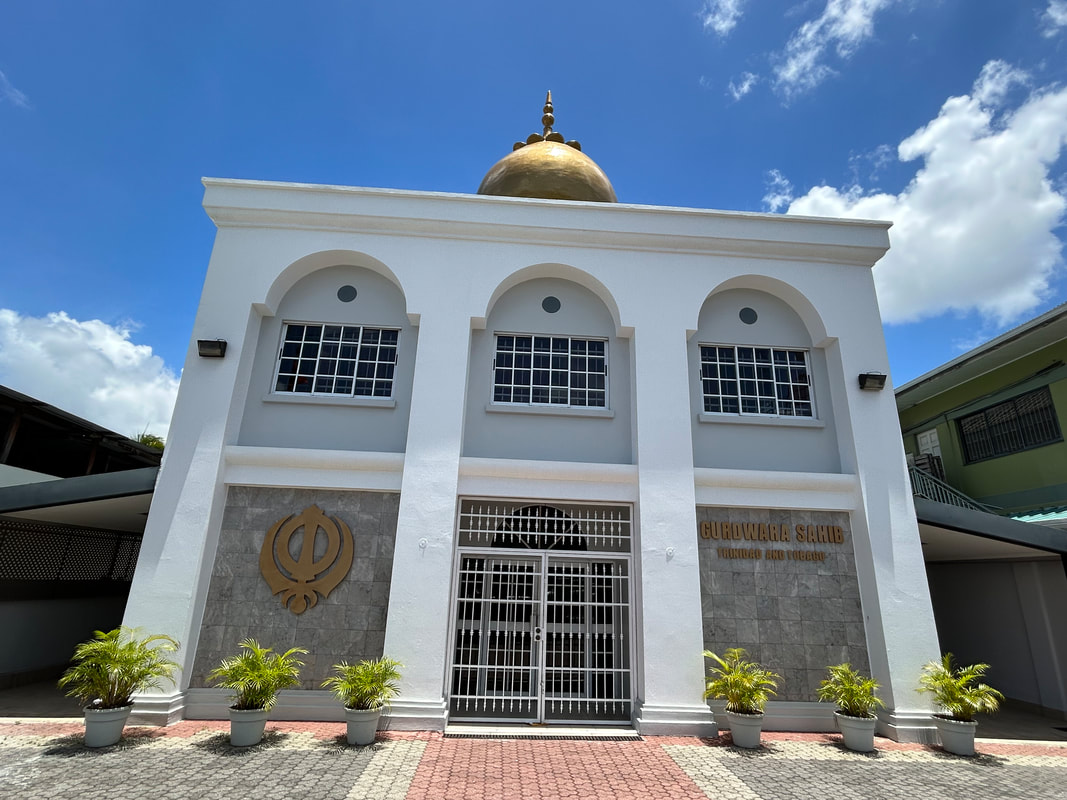SummaryAirport Rating ***** Reception of locals ***** Cost: £££
Caribbean or South American?Trinidad and Tobago might be a small group of islands in the southern Carribean, but the country has made a disproportionate impact in the world of sport. In cricket, Brian Lara is commonly recognised as one of the best batsmen of all time, becoming one of the earliest cricket 'celebrities' with a wide range of merchandise produced using his name (I even owned a Brian Lara cricket game). In football, Dwight Yorke was one of the first footballers I admired as he was a striker for my local football team, Aston Villa. Despite leaving on pretty bad terms, he won almost every trophy a player could win at Manchester United. At the same time, Shaka Hislop was becoming a cult favourite goalkeeper in the Premier League with Newcastle United and West Ham. It was this exposure to Trinidad and Tobago's sports stars growing up that created a year's long fascination with these islands so far away from England. Located in the southern Caribbean, these islands are only 7 miles off the coast of South America and in terms of biodiversity have more in common with the South American continent than the rest of the Carribean. As they were once connected to the mainland continent, they were also the first group of islands settled by humans, over 7000 years ago. While a vibrant indigenous culture existed for thousands of years, the arrival of the Spanish under Columbus changed everything. Trinidad fell under Spanish rule for around 300 years although settlement was sparse. It picked up during the late 18th century as thousands of French settlers arrived thanks to incentives by the Spanish government but the islands were taken over by the British at the turn of the 19th century. Tobago, being the smaller island, had a more tumultuous history, passing frequently between the French, Dutch and British, before the island was finally unified with Trinidad under British rule at the turn of the 20th century. The British abolished slavery, but replaced African slaves with Indian indentured labourers, largely from the centre and south of the country. Today, the largest two largest ethnicities in the country are Afro-Trinidadians and Indo-Trinidadians, who together make up about three-quarters of the total population. After gaining independence of the British in 1962, the economy of Trinidad and Tobago grew quickly, built largely on its large reserves of natural gas and oil. Today it has one of the highest GDP's per capita in the Americas and is considered a high-income economy, although there is a large wealth disparity and the past few decades has seen a large rise in violent crime given its location as a drug transit point between South American and the Caribbean. While today Tobago is known as the tourist destination for its beautiful beaches, I spent my entire time in Trinidad, largely around the Port of Spain area. Port of SpainThe airport at Port of Spain fairly basic but was efficient. I had no issues going through immigration or security on arrival and departure as a Sikh. The airport is a short drive from Port of Spain, about 40 minutes away. Port of Spain is the capital of country and the second largest city after San Fernando in the south. It is a heavily industrial city, although there are beautiful natural landscapes a very short drive outside the city. I arrived in the city with plans to see and do a lot of things, from seeing the famous leatherback turtles hatching on a beach on the opposite side of the island, to taking a short flight to Tobago and experiencing the idyllic beaches of the island. But the universe had other plans. I've always been quite lucky with the weather when I've been travelling, but for the week or so I was on the island, almost every day had a decent amount of rain, making doing anything outdoors quite tricky. The world's largest roundaboutWithin the city I managed to experience some of the city's more famous landmarks. The centre of the city is Queen's Park Savannah, often simply referred to as "the Savannah." It is a large public park located in the heart of the city, and famously known as the world's largest roundabout. Within the 2.2 mile roundabout is a 260 acre public park, one of the largest in the Caribbean. The park serves as a focal point for the country's carnival festival, one of the largest carnivals in the world. In fact, no matter who I spoke to in the country, no matter what their age, they all spoke fondly about carnival. At times, it felt like the whole country revolved around a week of the year when the whole country has a party. On the perimeter of the Savannah are the Magnificent Seven, a collective term used to refer to a group of historic and architecturally significant buildings. These buildings are notable for their unique and ornate designs, showcasing a blend of various architectural styles that were popular during the late 19th and early 20th centuries. Each of the Magnificent Seven buildings holds its own distinctive charm and historical background and I found them absolutely fascinating. I was dropped off on the side of the Savannah and took my time walking around each of the buildings. Starting with my favourite you have the Queen's Royal College which was established in 1904 and is an all-boys secondary school and one of the oldest educational institutions in Trinidad and Tobago. The building looks like many other colonial style buildings constructed by the British in the late 19th and early 20th centuries, with a tall clock tower and large oblong windows. Then there is Stollmeyer's Castle which was also built in 1904 as a private residence but now serves as a venue for private events and functions. This was the first of the Magnificent Seven that was completed. Whitehall is next and served as the official residence of the British colonial governors, and until 2009 was the Office of the Prime Minister. It features a white facade, columns, and a prominent balcony. Archbishop's House was built as the residence of the Roman Catholic Archbishop of Port of Spain. It looks a little more French inspired in terms of the architecture. Roomor was originally constructed as a private residence but now houses diplomatic offices. Its design is inspired by Italian Renaissance architecture, with its symmetrical layout, rounded arches, and decorative stonework. Mille Fleurs was initially built as a private residence but went into a period of extended disrepair and disuse, only recently being renovated and restored. Hayes Court is currently the official residence of the Prime Minister of Trinidad and Tobago. It boasts elements of Queen Anne and Second Empire architectural styles, with its prominent dome, bay windows, and decorative trimmings. They all sit under a hill that is home to Brian Lara's house, who - once a year - opens his property up to select individuals to have a gathering. Nearby, a short few minutes from the Savannah is the famous "Avenue", short for Ariapita Avenue, the beating heart of the city that serves as the main strip for bars and restaurants. The Aveny is about 1 mile long and on most of the evenings I visited it was busy with people having fun into the night. On weekends, the energy is taken up another notch, the whole street is so busy that it's difficult for cars to get through. I spent a couple of evenings enjoying the nightlife of the Avenue and I had a great time. There is a lot of variety from dive bars and karaoke bars to more upscale exclusive restaurants. You've just got to be careful with belongings, like you would in any major city. Fort GeorgeOn the outskirts of the city is Fort George, a historic fortification perched on top of a hill known as St. Ann's Hill. The fort offers commanding views of the city, the Gulf of Paria, and the Northern Range mountains. The fort was originally built in 1804 by the British colonial authorities as a strategic defence outpost against potential French invasions. During the Napoleonic Wars, Trinidad, then a Spanish colony, was captured by the British in 1797. The British recognised the strategic value of the hill overlooking Port of Spain and decided to construct a fortification to protect the city and its harbour. Fort George was designed in the shape of a star with a polygonal layout. It was armed with cannons and housed a garrison of soldiers responsible for safeguarding the capital. The fort's elevated location and strong defenses made it a formidable stronghold. Over the years, Fort George played a crucial role in the island's history. However, with the decline of military threats and advancements in weaponry, the strategic importance of the fort diminished. By the mid-20th century, it was no longer actively used for military purposes. Today, Fort George stands as a historic site and popular tourist attraction. The drive up to the hill itself is fun as you begin the city below you moves further away. Once you're at the top, you've got the historical fort, complete with cannons, fortifications and panoramic views of the city. Unfortunately, I visited during a particularly cloudy day with a fair bit of rain, so the views were slightly restricted, but the breaks through the cloud left a great impression on me of the natural beauty of the island. Maracas BeachA short 40-minute drive north of the city lies one of Trinidad's more famous beaches - Maracas Beach. Maracas Beach is renowned for its stunning natural beauty, pristine shores, and the opportunity to experience a true taste of Trinidadian beach culture. Maracas Beach is set against a backdrop of lush green hills and tropical vegetation. The blue waters of the Caribbean Sea gently meet the golden sandy shores, creating a postcard-worthy scene. In fact, the journey from the capital to the beach is great because you can see the landscape around you shift from grey concrete, into this overgrown jungle like scenery (including islands that famously resemble turtles, and alligators). On the way to Maracas Beach, one of the more famous vistas is from Maracas Lookout, which offers panoramic views of the coastline and is a great spot for photographs. There are small stalls there selling food and drink, and chow - one of the two foods in Trinidad that I got addicted to, I really enjoyed pineapple chow which mixes the sweetness of the fruit with herbs and spices. Honestly, it was fantastic and something my vegetarian brothers and sisters can enjoy. The other one was bake and shark, a local delicacy that involves fried shark meat served in a fried bread called "bake" and topped with various condiments and sauces. The most famous bake and shark is in Maracas Beach and is called Richard's Bake and Shark. The beach itself is beautiful, with large palm trees, clear waters and a golden sandy beach. Much like the rest of my time on the island, I was only able to enjoy it in between showers, but it was still good fun. Paramin LookoutIn between the city and Maracas Beach is Paramin Lookout, a scenic viewpoint located in the picturesque village of Paramin, nestled in the Northern Range mountains of Trinidad. Honestly, as far as natural views of tropical islands go, this is one of the best I've seen. It has breathtaking panoramic views of the Caribbean Sea, the surrounding lush hills, and the city of Port of Spain in the distance. Getting to Paramin Lookout involves a scenic drive through winding roads, adding to the overall experience. There are a couple of routes, an easier shallower and longer drive, and a much steeper route. I experienced both on two different days. On a cloudy day I took the shallower route but unfortunately the visibility was so restricted I could barely see the road, let alone any views. I returned on a clear day on the steeper route, and the drive up was an experience. At times it felt like the road was vertical and I was about to take off on a rocket ship. The main draw of Paramin Lookout is the stunning views it provides. From this vantage point, visitors can marvel at the expansive vistas of the Caribbean Sea and the Gulf of Paria. On clear days, it's even possible to spot neighbouring islands like Grenada and Venezuela in the distance. There are a handful of designated lookout points which give you views across the island and sea. If you want good views this is definitely the place to visit. Caroni SwampIt's strange, because Port of Spain is a heavily industrialised city that has a decent sized financial services industry, and a large port to export oil and gas - but all around the city are pockets of natural beauty. The Caroni Bird Sanctuary is perhaps the best of these examples. It is one of the country's most famous eco-tourism destinations and a haven for birdwatchers and nature enthusiasts from around the world. The sanctuary is less than half an hours drive from Port of Spain, but it feels like an absolute world apart. The bird sanctuary is part of the Caroni Swamp a protected wetland and designated as a Ramsar Wetland of International Importance which means it is globally recognised for its importance to biodiversity and serves as an important ecosystem for many species, providing critical nesting and feeding grounds for resident and migratory birds. Arriving in the sanctuary there were already small groups of people ready to take a boat ride across the wetland. The boat I left on was about half full, which meant plenty of space to stretch my legs and enjoy the ride. The tour guide, an Indo-Trinidadian was knowledgeable and personable and made the whole boat ride even better. The whole boat ride lasted just over two hours, and it's best done in the evening for several reasons. Firstly, the scorching hot doesn't hurt as much, secondly, the golden hues from the sunset are incredible, and third, you can watching nesting birds return home after a day of hunting. The most famous of these birds is the Scarlet Ibis, and there are thousands of them that nest in these wetlands. These striking, bright red birds congregate in large flocks, creating a breathtaking sight during their daily flight back to the swamp at sunset. It was an absolutely incredible experience waiting for them to return, and then, almost as if they were on the clock, watching them fly overhead and perch themselves onto their trees. Aside from the iconic Scarlet Ibis, the Caroni Bird Sanctuary is home to an impressive array of wildlife. Visitors may spot caimans, crabs, tree boas, and various marine and freshwater fish as they explore the mangrove habitat. I saw a decent size boa asleep in a tree branch, and the boat took us directly underneath the snake, which was a great experience. It's more than just the animals, however. The sanctuary's natural beauty is captivating, with the mangrove trees forming a unique and enchanting landscape. The tranquility of the swamp and the stunning sunsets add to the charm of the experience. In the distance you can see large green hills, and with the blue skies, and clear waters shining golden from a setting sun, the whole place felt magical. At one point the guide bought out a tub of ingredients and started making pineapple chow which was then shared across the boat, and for those moments, I felt completely detached from everything else in my life. Liming in TriniI met some good people out there who showed me different parts of the city, as well as trying to give me a better understanding of society dynamics (and teaching me local slang - liming is broadly equivalent to chilling or vibing). There is definitely wealth inequality. growing violent crime, and while on the surface there doesn't seem to be issues in terms of race, politics here is largely defined under ethnic lines between Afro-Trinidadians, and Indo-Trinidadian. A friend took me shopping in a modern shopping centre in the upscale part of town known as the "one percent" and then took me to a boat yard where she keeps her boats. Here I also saw a fisherman gutting fish which were to be used as bait for the next day. I've spent many years working on farms, but I've not actually seen fish being gutted before and that was a new experience. Another friend took me to local villages where he seemed to know everyone, took me to street vendors, and evenings in the Avenue. But interestingly, this seemed to be the great equaliser. Both people loved their free time around local bars and restaurants in the evening, with even the "one percenter" happily buying a drink in a convenience store / off-licence and drinking with her friends, although the shop was covered in metal bars to stop robbery. Many people came in and out, joining the conversation and leaving, and it was a great insight into this incredible country. Would I recommend visiting Trinidad?If you have the means and the opportunity, I think a trip to Trinidad is a good experience. I got a little unlucky with the weather, but during the sunny days I managed to see and do quite a bit. I didn't manage to go to Tobago, and that would certainly be top of my list for a return journey - as would seeing the leatherback turtles nesting on the beach. As a Sikh I had no issues in the airport or withing the city. The Sikh community in the country is relatively small, but they do have a magnificent gurdwara - and a storied one too. The Gurdwara is the second oldest in the western hemisphere and dates back to the 1880s, although the current building is only around a decade old. It also happens to be the only Gurdwara in the Carribean. The Gurdwara is a beautiful marble construction that really stands out on a busy street absolutely packed with people. In many ways it reminded me of Soho Road Gurdwara, not in terms of the design, but more in terms of its place on a busy road where it might feel a little unexpected. The Gurdwara only opens on a Sunday given the very small population of Sikhs in the country (very similar to the Gurdwara that I visited in Tokyo). Comments are closed.
|
AuthorBritish Sikh, born in the Midlands, based in London, travelling the world seeing new cultures. Categories
All
|











 RSS Feed
RSS Feed